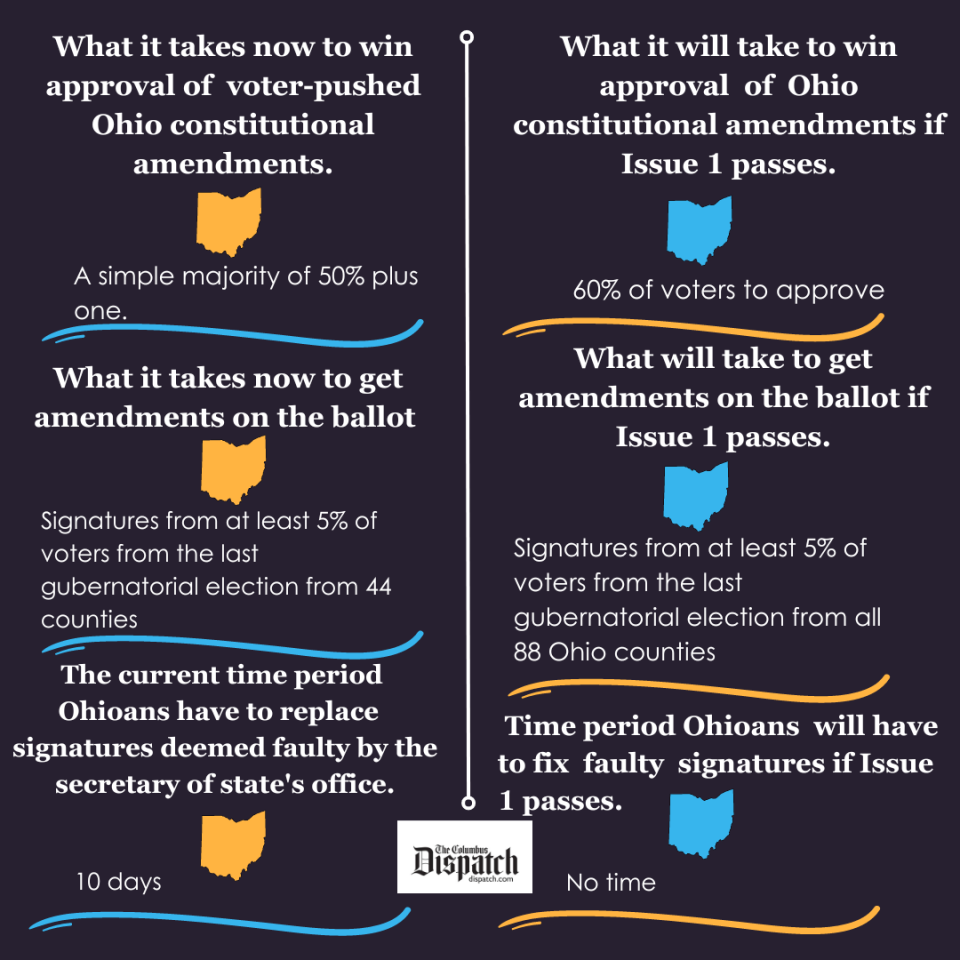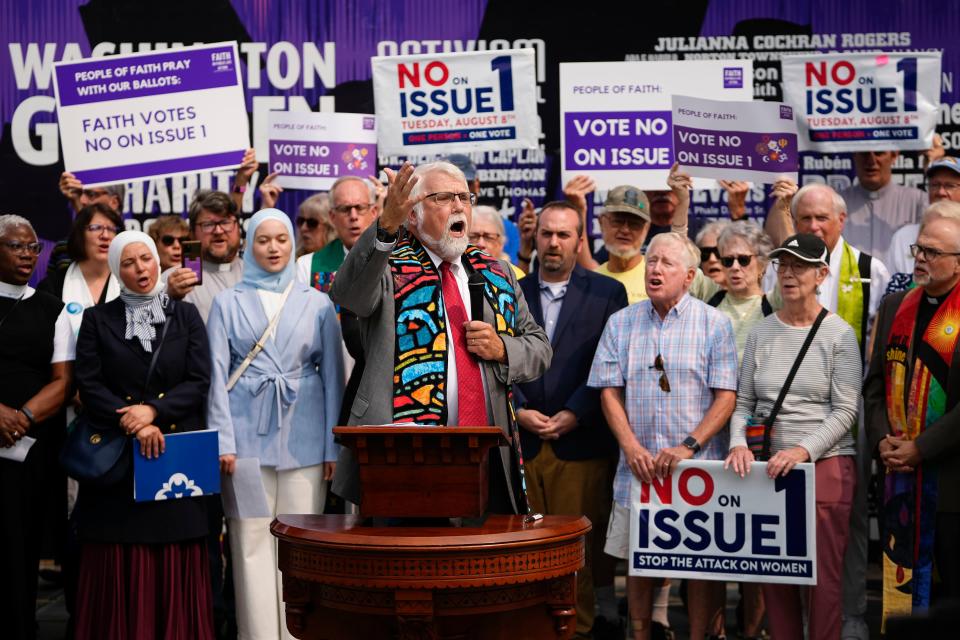Issue 1 an attempt to hoodwink Ohioans out of democracy's crown jewel| Opinion| Professor
Daniel T. Kobil is a professor at Capital University Law School.
Proponents of Issue 1 have launched an advertisement urging that we raise the bar for amending the Ohio Constitution because the U.S. Constitution requires a “66 percent” supermajority for amendment.
“Be wise like the founders,” the ad intones, against a backdrop of waving flags: impose a 60% minimum for amending the Ohio Constitution.
Issue 1: What you need to know about Ohio's August election to change how constitution is amended
There are numerous problems with this argument, starting with math and ending with basic civics.
First, in their effort to imply that Issue 1 is somehow modeled on the federal document, the advertisement blatantly misrepresents the process for amending the U.S. Constitution.
While amendments can be proposed by two-thirds of both houses or by the state legislatures (67%), amendments must be approved by three-fourths — 75% — of the states before they are valid.

Such a supermajority requirement would be positively dangerous in Ohio.
The U.S. Constitution’s 75% requirement is there because at the time of the founding, the delegates feared the prospect of allowing a simple majority of states to effectuate rules that would undercut the sovereignty of the people in their own respective states.
Small, agricultural states worried that unfavorable amendments might be imposed by a group of larger, mercantile states.
Slave states were concerned that an abolitionist coalition could outlaw slavery.
Daniel T. Kobil: Abortion bans give government right to take woman's property. She should be paid.
In Ohio, there is no danger that anyone other than Ohioans will vote to pass or reject state constitutional amendments.
Amendments that are passed by a majority of voters can be undone by a simple majority as well. There is simply no need for a supermajority barrier.
Our view: 'Power-hungry hypocrites' trying to con Ohio. Issue 1 about dominance, deceit| Our view
Moreover, the U.S. Constitution’s supermajority requirement is viewed by many constitutional scholars as too onerous.
It has prevented our country from adopting crucial, morally necessary amendments to the Constitution through democratic processes, forcing us to effectuate changes either by asking the Supreme Court to make needed constitutional changes, or by bringing us to war.

When the issue of slavery came to a head in the 19th Century, it was impossible to remove this stain on our federal Constitution using the amendment process. The U.S. Supreme Court, in an infamous effort to resolve this issue judicially, ruled in Dred Scott v. Sanford that slavery was constitutional based on the “original intent” of the founders.
Ultimately, this decision helped precipitate the Civil War, which was what forced several of the defeated confederate states eventually to agree ratify the 13th Amendment abolishing slavery.

When it came to requiring states to grant the freed slaves equal rights under the law, again it was only coercion that allowed ratification of the 14th Amendment.
The Republican Congress required any state that had been part of the confederacy to ratify the 14th Amendment to regain representation in Congress.
Had the former confederate states not been effectively forced to ratify, equal protection and due process of law would likely not have become part of our constitution.
Back in Ohio, in an effort to scare voters into voting for their radical amendment, the proponents conclude their ad by stating that “our fundamental rights can be wiped away” by special interests with barely 50% of the vote.
But they again flunk basic government with this assertion.
This is because the U.S. Constitution guarantees our fundamental rights despite any state constitutions or laws to the contrary. If a majority of Ohioans voted to amend the Ohio Constitution to proscribe freedom of speech or ban the ownership of firearms, that provision would be invalidated by the federal courts with head-spinning alacrity.
The U.S. Constitution and the fundamental rights it protects, is “the supreme law of the land, and the judges in every state shall be bound thereby,” according to Article VI.
In the end, the proponents of Issue 1 seem to think that voters can be hoodwinked into giving away the crown jewel of direct democracy that they won in 1912, over the objections of a recalcitrant legislature and its allies.
Law expert: Past Ohio lawmakers would turn in graves about proposed constitution changes
Unfortunately for the proponents, Ohioans have proved to be quite willing to reject bad ideas that have been proposed for enshrinement in the constitution: since 1912 they have approved slightly more than half of the amendments submitted to them.
It is to be hoped that they will likewise give Issue 1 and its proponents the grade they deserve: “F” for “fail.”
Daniel T. Kobil is a professor at Capital University Law School.
This article originally appeared on The Columbus Dispatch: Issue 1 an attempt to hoodwink Ohioans out 'crown jewel'| Opinion

